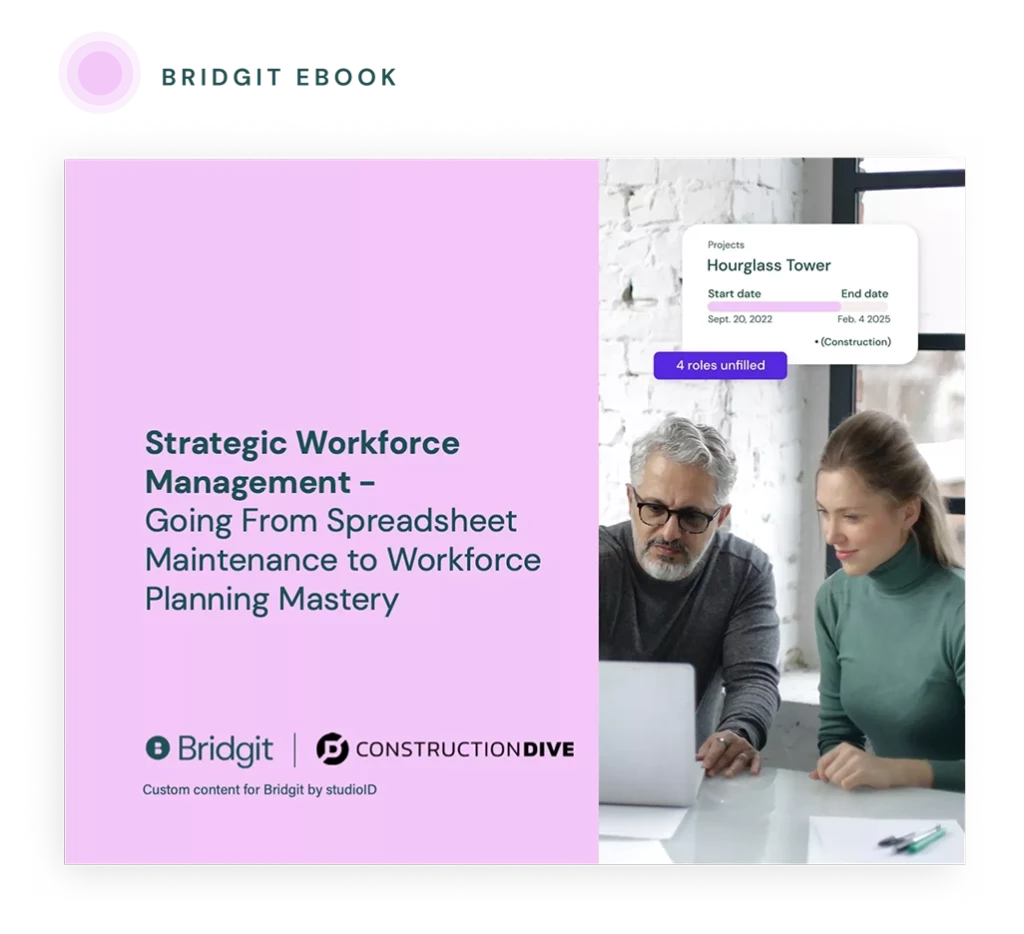According to the Centers for Disease Control and Prevention (CDC) website, the construction industry has one of the highest suicide rates among all industries in the United States. Contributing to the issue is the fact that mental health is often stigmatized as a topic of discussion, leading to this underlying problem being largely ignored.
Table of Contents
The threat of an economic recession is causing additional financial pressure and stress on employees, causing widespread turmoil that causes issues like worker burnout, increased absenteeism, and project delays.
For employers, recognizing and addressing these issues is critical for ensuring a safe working environment and helping employees stay healthy and productive. A more positive experience for construction workers will mean improved job satisfaction, ultimately resulting in better outcomes for businesses.
Let’s go over what you need to know about this topic.

Looking to be more strategic with your people?
We partnered with Construction Dive to outline the steps any contractor can take to be more strategic with their workforce management.
Factors that influence construction employee mental health
Mental wellness (or lack thereof) is a complex issue with multiple contributing factors. While it’s difficult to pinpoint a single cause, chronic and pre-existing conditions like anxiety and depression can place workers at risk for relapse. Additionally, genetic factors, childhood trauma, substance abuse, financial stress, and physical illness can all impact one’s psychological well-being.
It’s important to recognize that there’s often no singular cause for mental illness, just as there may not be for mental health issues in the construction industry. However, certain factors within the industry can contribute.
Chronic pain and substance abuse
Due to the physically demanding nature of manual labor jobs and the risk of workplace accidents, construction workers often experience chronic pain. Instead of seeking long-term physiotherapy, some may resort to using pain medication such as Tylenol and opioids to alleviate their discomfort.
The pressure of tight deadlines in the industry can lead workers to rely on these substances as a quick fix without fully realizing the potential consequences for their mental health and workplace safety. It’s crucial to promote alternative approaches to pain management that prioritize long-term well-being.
Lack of job control
Another significant contributing factor is feeling no control over one’s work. In cases such as this, individuals face:
- Limited opportunities for decision-making
- Inability to discuss workplace events
- Imbalanced work distribution
- Inconsistent communication flow
These factors can result in heightened levels of stress and anxiety. Furthermore, the pressure to excel and meet deadlines in the midst of this can contribute to workers being overwhelmed.
Welfare concerns
Welfare concerns arise from various factors, such as job insecurity, limited employment advancement opportunities, and financial instability. This can occur even at higher levels of management for construction professionals.
For instance, overpromotion may result in burnout as employees feel compelled to meet unrealistic expectations through excessive work. Employers need to acknowledge and address these issues to safeguard the mental well-being of their workforce.
Improving construction mental health
As an employer, it’s unrealistic to expect the immediate alleviation of stress among your workers. Nevertheless, prioritizing mental health within your company remains crucial. Taking proactive measures results in improvements in quality of life and enhanced productivity.
Here are some tips for improving mental health in the construction industry.
Ensure worker safety
Ensuring worker safety reduces the risk of chronic pain and substance abuse. This entails proper training and providing workers with the right amount of safety gear to significantly reduce the chance of injury or accidents. Make sure projects are carried out in a safe, controlled environment to help protect workers.
Foster a workplace culture that normalizes self-care
Prioritizing employee mental well-being involves fostering a workplace culture that normalizes and supports conversations about these topics.
It’s important for leadership to proactively address this issue and underscore that the construction industry can be a significant source of stress. Doing so emphasizes their readiness to assist in reducing stress and anxiety.
These discussions can also pave the way for problem-solving and potential crisis prevention.
Provide resources
Ensure that workers have access to the right resources. You might consider, for instance, providing helplines or inviting guest speakers to facilitate discussions on mental health.
Additionally, employers should consider offering extended vacation time and comprehensive healthcare services, encompassing both physical treatments like physiotherapy and personalized psychological support.
By prioritizing resources that promote self-care, employers demonstrate their unwavering commitment to the well-being of their employees. This fosters resilience in the face of stress and creates an environment where individuals feel empowered to openly discuss their challenges.
Practice people-first planning
Re-consider the way you strategize and plan your projects. Embracing a proactive, people-centric approach can foster realistic project timelines and alleviate workforce stress. This may mean making use of data analysis, practicing effective risk management, and skillfully managing labor needs.
A major hurdle in construction project planning is the tendency to be reactive. Often, contractors neglect to adequately plan their workforce for project pursuits, leading to a frantic scramble for labor once they win a project.
Sudden changes and randomness intensify stress. If your team is already under pressure due to tight deadlines and budgets, consider the impact of sudden job site changes with minimal notice. Over time, accumulated stress can give rise to mental health issues.
By diligently planning your workforce for pursuits, you can develop long-term hiring and labor plans. This ensures that you only take on projects within your capacity, leading to more informed business decisions and better employee satisfaction.
Offer opportunities for employee development
One of the best things you can do is ensure that your team members have access to professional development opportunities. This helps give employees a sense of purpose as they strive towards developing their skills. As they hone their capabilities, they’ll also acquire transferable skills that bolster job security.
This also increases employee satisfaction, resulting in greater productivity and a culture that ensures people are willing to work for your company long-term.
Ensure balanced workloads and prioritize your workers with Bridgit Bench
Prioritizing mental health within the construction industry is essential for fostering an environment where employees can thrive. By taking proactive measures, employers can ensure the mental well-being of their team members and boost productivity.
To prevent overburdening workers, proper labor planning is imperative. For this, consider making use of the best workforce management solution on the market: Bridgit Bench. With Bench, you can strategically map out your labor force and maximize the potential of your employees.
Request a demo with Bridgit today.


